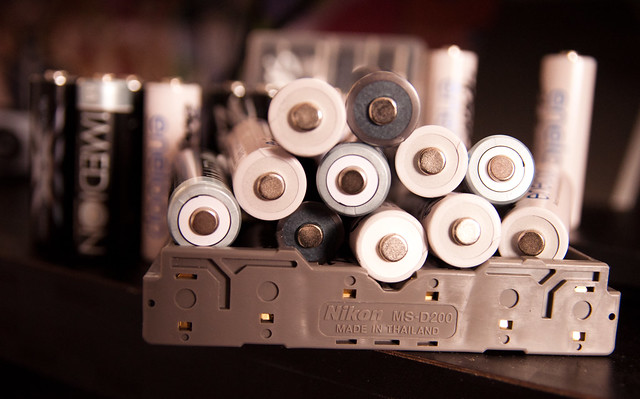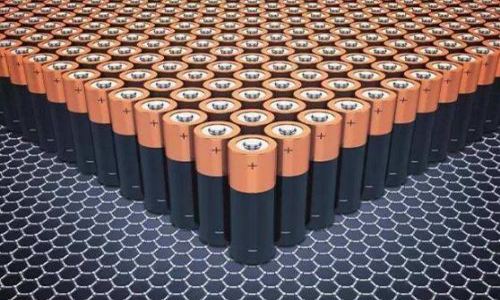Comparison: NiCad vs Lithium ion Battery Life
Aug 13, 2019 Pageview:2361
To clear misconceptions, Lithium batteries are different from Lithium-ion batteries. Lithium batteries are not rechargeable while Lithium-ion batteries are rechargeable batteries. Due to the high risk of discharge possessed by Lithium batteries when they short-circuit, the Transportation Security Administration heavily limits carrying lithium batteries on airplanes.
Some states even go as far limiting the number of batteries sold within their territory.
There are several similarities and differences between NiCad batteries and Lithium-ion batteries. Both types of batteries can be recharged and perfect for certain applications.
Battery Applications
You can often find Li-ion batteries in portable devices such as digital cameras, laptops, mobile phones and much more. Nickel-cadmium batteries are found in radios that are two-ways and power tools.
Memory Effect
Some batteries are plagued by “memory” effect. When some batteries are not discharged periodically, large crystals begin to form on their cell plates. The accumulation of these crystals makes the battery to lose its electrical storage area. Unlike Li-ion batteries, NiCad (Nickel Cadmium) batteries are susceptible to this memory effect.
Shelf Life
Both types of batteries possess high shelf lives. Li-ion batteries can stay up to 3 years while Nickel Cadmium batteries can be stored for a period of 5 years.
Cycles
If Nickel Cadmium batteries are properly maintained, they can offer up to 1,000 charge and discharge cycles. A properly maintained Li-ion battery is capable of offering up to 500-charge and discharge cycle.
Self-discharge
Lithium-ion batteries have less self-discharge rate than Nickel Cadmium batteries. If you store a NiCad battery you haven’t been using for months, you will need to recharge it. On the other hand, Li-ion batteries can go several months without being used before they start self-discharging.
Voltage
NiCad batteries operate at a lower voltage compared to Li-ion batteries. A typical NiCad battery operates at 1.2 Volts while a Li-ion battery operates at 3.7 volts.
Which battery has longer life, NiCad or lithium ion battery?
Both battery types has long lives. It’s now dependent on how you take care of your battery. If you follow the industry standards for each battery, you will use them for quite a long time. NiCad batteries often last up to 5 years from the time of production, while Lithium-ion batteries lasts up to 3 years from the date of manufacture.
Can you use a NiCad instead of lithium ion battery?
Most machines can’t differentiate between energy from a lithium-ion battery and power from a NiCad battery. And because cordless gears are tailored to reject incompatible battery packs (wrong voltages), you’re safe using any battery pack that fits the gear and is produced by the same manufacturer.
The earliest versions of Li-ion batteries were not backward compatible with NiCad battery gears, but over time, this changed.
Ridgid, DeWalt, and Hitachi – the three main gear companies – now produce 18-volt batteries that are both forward and backward compatible. On the other hand, Milwaukee and Makita 18-volt batteries are not backward and forward compatible.
Due to developments in battery circuitry, chargers may not be forward compatible; the charger that came with a NiCad gear will not work with Lithium-ion batteries.
How to prolong the battery life of NiCad and lithium ion battery
There are lots of content online on how to conserve your battery power, but not much on how to care for your batteries and boost the longevity of your battery.
In today’s world of mobility, battery life is precious. If you doubt it, go to the airport and watch the road troopers. Things can get nasty when two or more people spot the only available outlet at the same time.
If you want your battery to operate efficiently, then here are a few ways you could do that:
1.Store your batteries at room temperature – Keeping your battery at room temperature implies that you store it between 20 and 25 degree centigrade. The worst thing to occur to a Li-ion battery is to be subjected to high temperature after having a full charge. Thus, don’t plug in your battery to charge if it’s hot. Heat is one of the main factors that decrease the life of a Lithium-ion and NiCad battery.
2.Consider carrying a high-capacity Li-ion battery rather than a spare – Batteries weaken as time passes, whether it’s being used or not. So a spare battery won’t be more durable than the current one in use. It is vital to remember the aging features when buying a battery. And ensure you buy batteries with the most recent manufacturing date.
3.Don’t allow full discharges but allow partial ones – Unlike Li-ion batteries, NiCad batteries do have charge memory. That means Lithium-ion batteries don’t need deep-discharge cycles. In fact, a partial discharge cycle is deemed the best for Lithium-ion batteries.
Battery experts suggest that a Li-ion battery should be allowed to completely discharge after 30 charges. If you continue doing a partial discharge, you tend to create a battery condition termed “digital memory”, and this decreases the accuracy of the measurement of the device’s power level. Hence, allow the battery to totally discharge to cut-off level and then recharge it. The power gauge will be recalibrated.
4.Don’t totally discharge Lithium-ion batteries – If you discharge a Li-ion battery below 2.5 volts per cell, an in-built safety circuit in the battery opens and the battery appears lifeless. At this point, the original Li-ion charger will be useless in recharging the battery to life. Only battery analyzers with the boost function may probably recharge the battery to life. In addition, it is advisable not to attempt to recharge Li-ion batteries that are totally discharged and have been kept in that condition for many months. This is a safety precaution.
For longer storage, discharge a Li-ion battery to about 40% and store in a cool place – My notebook always had an extra battery, but it would never last for a long time like the original battery. I got to understand that it’s because I was storing the battery fully charged. This implies that oxidation of Li-ion is at it’s highest level. It is recommended to store Lithium-ion batteries at 40% discharge in the refrigerator (not freezer).
- Prev Article: You Should Know More About Rechargeable Battery 18650 Size
- Next Article: How to know more about Li-ion batteries for PV systems
Leave Message
Hottest Categories
-
Hottest Industry News
-
Latest Industry News











